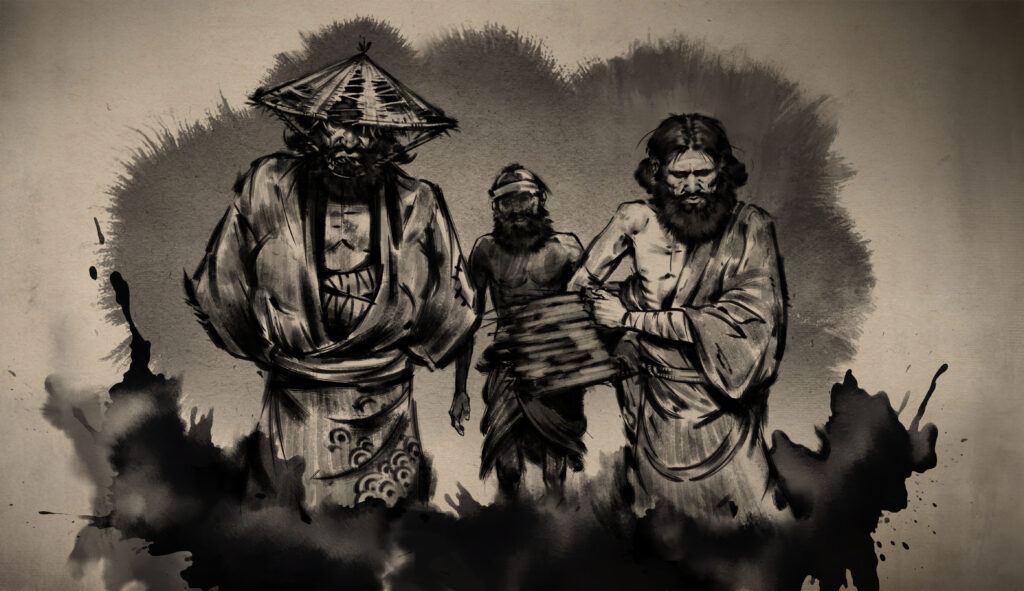
The burakumin are a large group of people who were historically discriminated against in Japan. They are not an ethnic minority; the discrimination against them is based on caste and descent. Considered “outcaste” and “untouchable,” the burakumin occupied the lowest rung in the traditional Japanese social structure.
During the early Edo period, those who worked with meat and animal products were heavily stigmatized. In 1603, they were split into isolated hamlet communities. These necessary but negatively-viewed professions included butchers, leather workers, and undertakers.
Throughout Japan’s feudal period, the burakumin were looked down on and mistreated. They were considered to be outside Japan’s four main caste divisions. As such, they were treated as social outcasts.
Burakumin were assigned badges of status such as special hairstyles, clothing, and the requirements to avoid other households and prostrate before their betters. The lowest of the low, known as “Eta”—which translates to “abundance of filth”—could be legally killed on the spot by samurai if they had committed a crime.
Although the burakumin caste was legally abolished along with the rest of the Japanese feudal caste system in 1871, their descendants continue to experience discrimination to this day. Hate mail is still sent to abattoirs. In the 1970s, employers circulated handwritten lists to avoid hiring those with burakumin names or who were associated with burakumin communities. Now, individuals use similar lists before marriage to avoid having burakumin in-laws.
In Tale of Ronin, the burakumin have already been forced into segregated communities and prejudice against them is going strong. The writers have chosen to use the period-accurate term Eta, despite its past and present use as a pejorative, in the interests of historical accuracy. In the game, it may be possible for players to become involved with outcaste communities… and they may find that the untouchables aren’t so different from them after all.